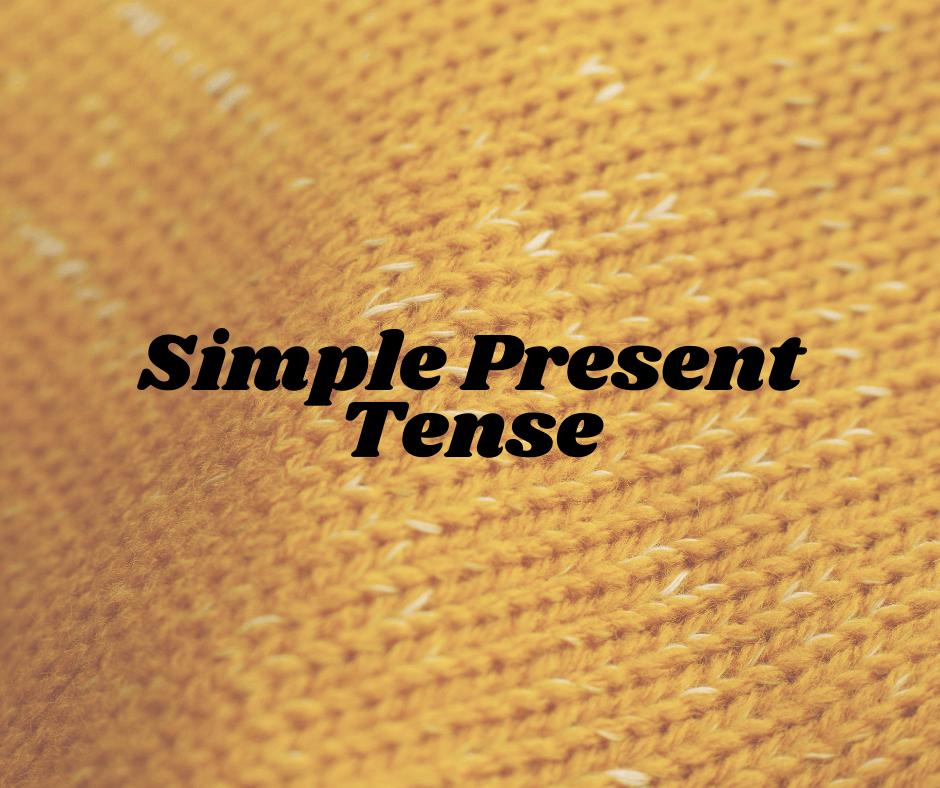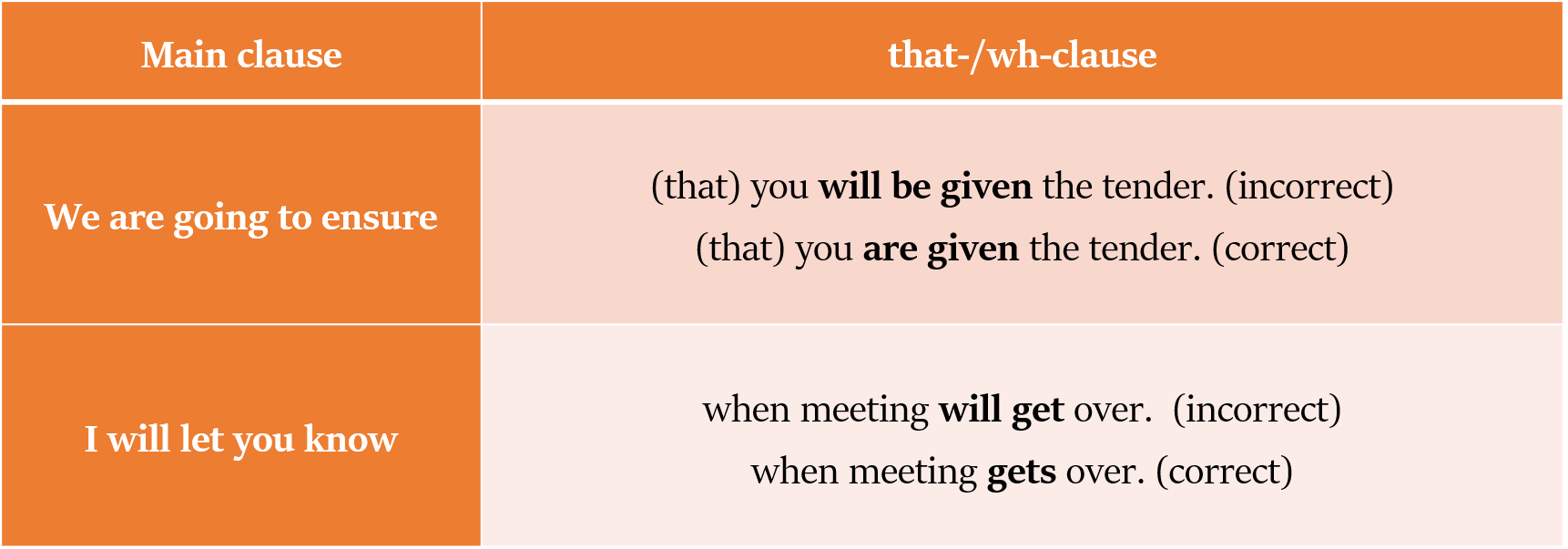Simple Present Tense की अवधारणा (Concept of Simple Present Tense)

Overview
इस लेख में हम अंग्रेजी के एक महत्त्वपूर्ण अध्याय के बारे में जानेंगे - Simple Present Tense की अवधारणा, in Hindi (हिंदी में)
 नोट
नोटइस अध्याय से सम्बंधित, अन्य विषयों के बारे में जानने के लिए आप हमारे निम्नलिखित लेख पढ़ सकते हैं:
इस लेख में, हम Simple Present Tense (साधारण वर्तमान काल) की अवधारणा, इसके विभिन्न उपयोगों और इस tense का उपयोग करके बनाई जाने वाली विभिन्न वाक्य संरचनाओं के बारे में अध्ययन करने जा रहे हैं।
Simple Present Tense को Indefinite Present Tense (अनिश्चित वर्तमान काल) के रूप में भी जाना जाता है।
Simple Present Tense के उपयोग
उपयोग 1: नियमित क्रियाएं, आदतें, सार्वभौमिक सत्य
हम सामान्य रूप से चीजों के बारे में बात करने के लिए Simple Present का उपयोग करते हैं, अर्थात नियमित क्रियाएं (routine actions), आदतें (habits), सार्वभौमिक सत्य (universal truth, ऐसी चीजें जो हमेशा सत्य होती हैं)।
हम इसका उपयोग यह कहने के लिए करते हैं कि कुछ हर समय होता है, या बार-बार होता है, या वो सामान्य रूप से सच है। यह महत्वपूर्ण नहीं है कि बोलने के समय वो action हो रहा है या नहीं।
Doctors look after the sick in hospitals. (look – )
Sun rises in the East. (rises – )
 नोट
नोटयहां कुछ संकेतक दिए गए हैं, जो बताते हैं कि कोई action आदतन है:
Always, Seldom, At times, Never, Hardly, At all times, Often, Scarcely, Seldom if ever, Daily, Rarely, Seldom or never, Generally, Barely, More often than not, Usually, Sometimes, Every day (Every + Time expression)
लेकिन इस नियम के कुछ अपवाद भी हैं।
अपवाद 1
आदतन actions, जिनसे चिड़न होती है, वो present continuous tense के द्वारा व्यक्त किये जाते हैं।
She is constantly losing the keys of the car.
You are always making this mistake.
He is always complaining about something or the other.
अपवाद 2
आदतन actions, जिनसे कारण और प्रभाव (cause and effect) की भावना व्यक्त होती है, वो present continuous tense के द्वारा व्यक्त किये जाते हैं।
Aanya goes for a morning walk every day because she has to participate in a beauty contest.
Aanya is going for a morning walk every day because she has to participate in a beauty contest.
Mragank does vigorous exercise every day because he wants to lose some weight.
Mragank is doing vigorous exercise every day because he wants to lose some weight.
उपयोग 2: जो अनिश्चित काल तक चलेगा (will go on indefinitely)
हम Simple Present का उपयोग उन स्थितियों का वर्णन करने के लिए करते हैं, जो अभी मौजूद हैं और जहाँ तक हम जानते हैं, शायद अनिश्चित काल तक उपस्थित रहेंगी।
It takes me an hour to write one article. (takes – )
Charlie Parker plays the saxophone brilliantly. (plays – )
कोई भी हरकत / स्थिति (action/situation) जो स्थायी (permanent) है, उसे continuous tense में नहीं रखा जा सकता है।
I am liking it. (गलत)
I like it. (सही)
I am knowing it. (गलत)
I know it. (सही)
He is believing. (गलत)
He believes. (सही)
He is loving it. (गलत)
He loves it. (सही)
He is remembering it. (गलत)
He remembers it. (सही)
आइए Simple Present Tense के कुछ और उपयोग देखें।
उपयोग 3: हेडलाइंस और कमेंट्री (headlines and commentary)
हम अखबारों की सुर्खियों और खेलों की कमेंट्री में Simple Present का इस्तेमाल करते हैं।
उदाहरण के लिए:
President signs the nuclear deal. (अखबार की हेडलाइन)
Klusener strikes the ball and off it goes towards the boundary line like a bullet. (कमेंट्री)
उपयोग 4: रिपोर्ट (report)
Simple Present का उपयोग हमने जो सुना, पढ़ा या देखा है उसे रिपोर्ट करने के लिए किया जाता है (कभी-कभी वाक्यांशों (phrases) में, जैसे I gather, I hear, I see and I understand):
This magazine article explains why Republicans are going to win the election again.
I understand you're worried about your son.
I hear that the neighbours are very rich.
उपयोग 5: विस्मयादिबोधक वाक्यों में (in exclamatory sentences)
हम 'here' और 'there' से शुरू होने वाले विस्मयादिबोधक वाक्यों में भी Simple Present का उपयोग करते हैं, यह व्यक्त करने के लिए कि वर्तमान में वास्तव में क्या हो रहा है|
Here comes the train !
There he goes !
Simple Present का इस्तेमाल उद्धरण (quotations) को पेश करने के लिए किया जाता है।
Tej Bahadur says, ‘Sweat now in training, save blood in war’.
उपयोग 6: लोकोक्ति (Proverbial facts)
लोकोक्ति के तथ्यों को, उनके निरंतर अस्तित्व या प्रासंगिकता प्रदर्शित करने के लिए, simple present tense में व्यक्त किया जाता है।
It takes two to make a quarrel.
Nothing succeeds like success.
One swallow doesn’t make a summer.
A stitch in time is saving nine.
उपयोग 7: क्रियात्मक क्रिया (Performative verbs)
क्रियात्मक क्रिया (Performative verbs): कभी-कभी हम कुछ कहने के बाद कुछ करते हैं।
उदाहरण के लिए:
'I promise...' कहकर हम कुछ वादा (promise) करते हैं;
'I suggest....' कहने के बाद हम कुछ सुझाव (suggest) देते हैं।
ये वे क्रियाएं हैं जो उनके द्वारा वर्णित action को निष्पादित करती हैं (जिन्हें performative verbs कहा जाता है)।
कुछ ऐसी क्रियाएं (verbs) हैं: promise, suggest, advise, insist, agree, refuse, admit, accept, acknowledge, apologise, assume, deny, guarantee, hope, inform, predict, promise, recommend, suppose, warn, आदि।
यहां हम Simple Present का इस्तेमाल करते हैं।
I promise I won't be late for the class again. (I am promising)
I suggest that you get yourself a lawyer. (I am suggesting)
अधिक अनिश्चित या विनम्र लगने के लिए, हम performative verbs के साथ modals का उपयोग कर सकते हैं:
I would suggest that you get yourself a lawyer.
भविष्य के लिए Simple Present Tense
अवधारणा 1
*निकट भविष्य की नियोजित कार्रवाई (planned action of near future) (यानी निश्चित आधिकारिक समय सारिणी/निश्चित आधिकारिक कार्यक्रम) को व्यक्त करने के लिए भी हम Simple Present tense का उपयोग करते हैं।
President leaves for France next month.
The college opens on 22nd October.
There is a full moon tonight.
The sun rises at 5.18 tomorrow.
 नोट
नोटSimple Present tense के बजाय, हम अर्थ में न बराबर अंतर के साथ, इन वाक्यों में will + infinitive का भी उपयोग कर सकते हैं (हालांकि Simple Present tense का उपयोग करने से पता चलता है कि जो व्यवस्था की गयी है, या जो कार्यक्रम बनाया गया है, वो निश्चित है)।
President will leave for France next month.
The college will open on 22nd October.
अवधारणा 2
व्यक्तिगत योजनाओं या भविष्यवाणियों के मामले में, हम simple present tense का उपयोग नहीं करते हैं। इसके बजाय हम उपयोग करते हैं:
- will,
- going to, या
- the present continuous
Although terrorism is a problem only in France at the moment, we think it affects the rest of Europe soon. (गलत – simple present tense का प्रयोग यहाँ उचित नहीं है)
Although terrorism is a problem only in France at the moment, we think it will affect the rest of Europe soon. (सही - will)
I am just stay in to watch a movie tonight. (गलत – simple present tense का प्रयोग यहाँ उचित नहीं है)
I am just staying in to watch a movie tonight. (सही – present continuous)
As he is very tired, I guess he is just rest tonight. (गलत – simple present tense का प्रयोग यहाँ उचित नहीं है)
As he is very tired, I guess he is just going to rest tonight. (सही – going to)
अवधारणा 3
समय और शर्तों के उपवाक्यों (clauses of time and clauses of condition) में हम Simple Future tense के बजाय, Simple Present tense का इस्तेमाल करते हैं|
समय समुच्यबोधकों द्वारा शुरू किए गए क्रियाविशेषण उपवाक्यों में (In adverbial clauses introduced by time conjunctions)
हम समय समुच्यबोधकों (जैसे की after, before, when, till और until) द्वारा शुरू किए गए क्रियाविशेषण उपवाक्यों में simple present tense का उपयोग करते हैं (will के बजाय)
I shall wait till you complete your homework. (till you complete your homework – clause of time)
When you see Meenakshi, tell her that I am sorry. (When you see Meenakshi – clause of time)
शर्तों के उपवाक्यों में (In conditional clauses)
हम if, unless, in case, और provided वाले conditional clauses में simple present tense का उपयोग करते हैं|
If it rains, we shall get wet. (If it rains – conditional clause)
I will bring a pistol in case we get into trouble. (in case we get into trouble – conditional clause)
अवधारणा 4
हम that- और wh- उपवाक्यों में simple present tense का उपयोग करते हैं, अगर:
- मुख्य उपवाक्य (main clause) भविष्य को संदर्भित करता है।
- that-/wh- उपवाक्य भविष्य को संदर्भित करता है - इस उपवाक्य (clause) में हम simple present tense का उपयोग करेंगे न कि 'will' का।

tenses
 नोट
नोटहम that- और wh- उपवाक्यों में will का उपयोग करते हैं, अगर:
- मुख्य उपवाक्य (main clause) वर्तमान को संदर्भित करता है।
- that-/wh- उपवाक्य भविष्य को संदर्भित करता है - इस उपवाक्य (clause) में हम 'will' का उपयोग करेंगे न कि simple present tense का।
I ensure you that the children enjoy the movie. (गलत)
I ensure you that the children will enjoy the movie. (सही)
हालाँकि, अगर हम that- और wh- उपवाक्य में एक निश्चित व्यवस्था (fixed arrangement) के बारे में बात कर रहे हैं, तो हम 'will' या simple present tense का उपयोग कर सकते हैं।
It is fortunate that a similar flight will leave at the same time tomorrow. (सही)
It is fortunate that a similar flight leaves at the same time tomorrow. (सही)
Simple Present Tense की विभिन्न वाक्य संरचनाएं (Different Sentence structures of the Simple Present Tense)
हम simple present tense में निम्नलिखित सहायक क्रियाओं (helping verbs) का उपयोग करते हैं (subject के पुरुष और संख्या के आधार पर):
tenses
 नोट
नोटयह आवश्यक नहीं है कि 'do/does' हमेशा सहायक क्रियाओं के रूप में कार्य करेंगे। वे मुख्य क्रियाओं (main verbs) के रूप में भी कार्य कर सकते हैं।
I do it regularly.
He does it regularly.
घोषणात्मक वाक्यों की संरचना (Structure of Declarative sentences)
सकारात्मक घोषणात्मक वाक्य (Affirmative Declarative Sentences)
पैटर्न: Subject + + Object
Aanya goes to college.
I go to college.
 नोट
नोटI/we/you/they/बहुवचन subject - हम का उपयोग करेंगे
he/she/it/एकवचन subject - हम का उपयोग करेंगे
 नोट
नोटजब हम मुख्य क्रिया पर जोर देना चाहते हैं, तो हम do/does + का प्रयोग करते हैं
पैटर्न: Subject + do/does + + .......
Aanya does meet me every day.
नकारात्मक घोषणात्मक वाक्य (Negative Declarative Sentences)
पैटर्न: Subject + do not / does not + + Object
Aanya does not go to college. (Aanya – III person singular/एकवचन, इसलिए हम does का उपयोग करेंगे)
I do not go to college. (I – I person, इसलिए हम do का उपयोग करेंगे)
प्रश्नवाचक वाक्यों की संरचना (Structure of Interrogative sentences)
सकारात्मक प्रश्नवाचक वाक्य (Affirmative Interrogative Sentences)
पैटर्न 1: Do / Does + Subject + + Object?
Does Aanya go to college?
Do they go to college?
पैटर्न 2: Wh. family + do / does + Subject + + Object?
When does Aanya go to college?
When do they go to college?
नकारात्मक प्रश्नवाचक वाक्य (Negative Interrogative Sentences)
पैटर्न 1: Do / Does + Subject + not + + Object?
Does Aanya not go to college?
Do they not go to college?
पैटर्न 2: Wh. family + do / does + Subject + not + + Object?
Why does Aanya not go to college?
Why do they not go to college?
 नोट
नोटसामान्य तौर पर, simple present tense के मामले में, हम वाक्य को नकारात्मक या प्रश्नवाचक बनाने के लिए "do/does" का उपयोग करते हैं।
Virat does not like Rohit.
Do you know?
अपवाद: "is/am/are" के मामले में, वाक्य को नकारात्मक या प्रश्नवाचक बनाने के लिए, हम केवल इन्हीं सहायक क्रियाओं (is/am/are) का उपयोग करते हैं।
Mragank is a gambler. (सकारात्मक घोषणात्मक वाक्य)
Mragank is not a gambler. (नकारात्मक घोषणात्मक वाक्य)
Is Mragank a gambler? (प्रश्नवाचक वाक्य)

अतिरिक्त पुस्तकें और उपकरण
यदि आप किताबों के माध्यम से सीखना पसंद करते हैं, या संदर्भ उद्देश्यों के लिए कुछ अच्छी अंग्रेज़ी व्याकरण किताबें चाहते हैं, तो आप हमारा यह लेख पढ़ सकते हैं|